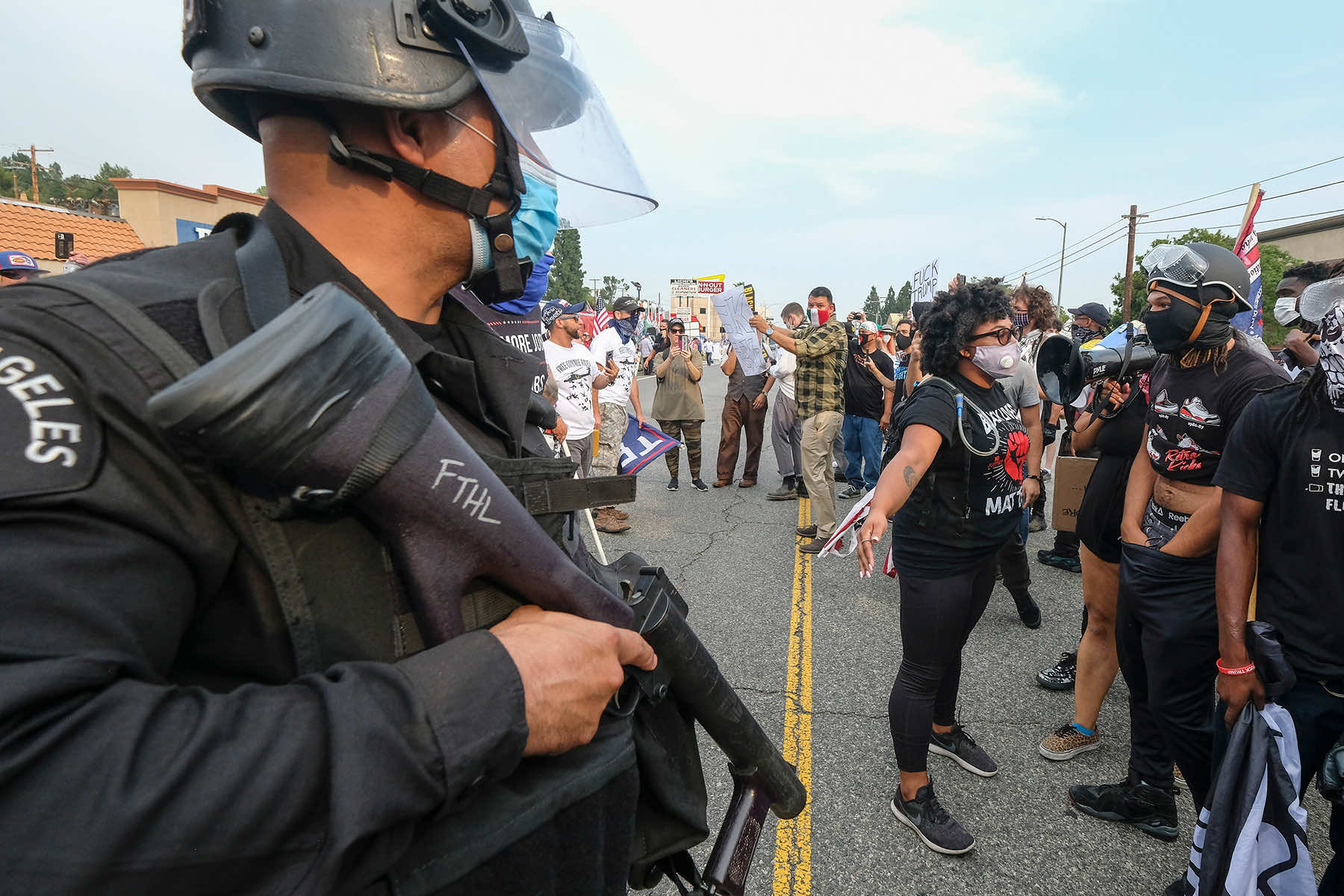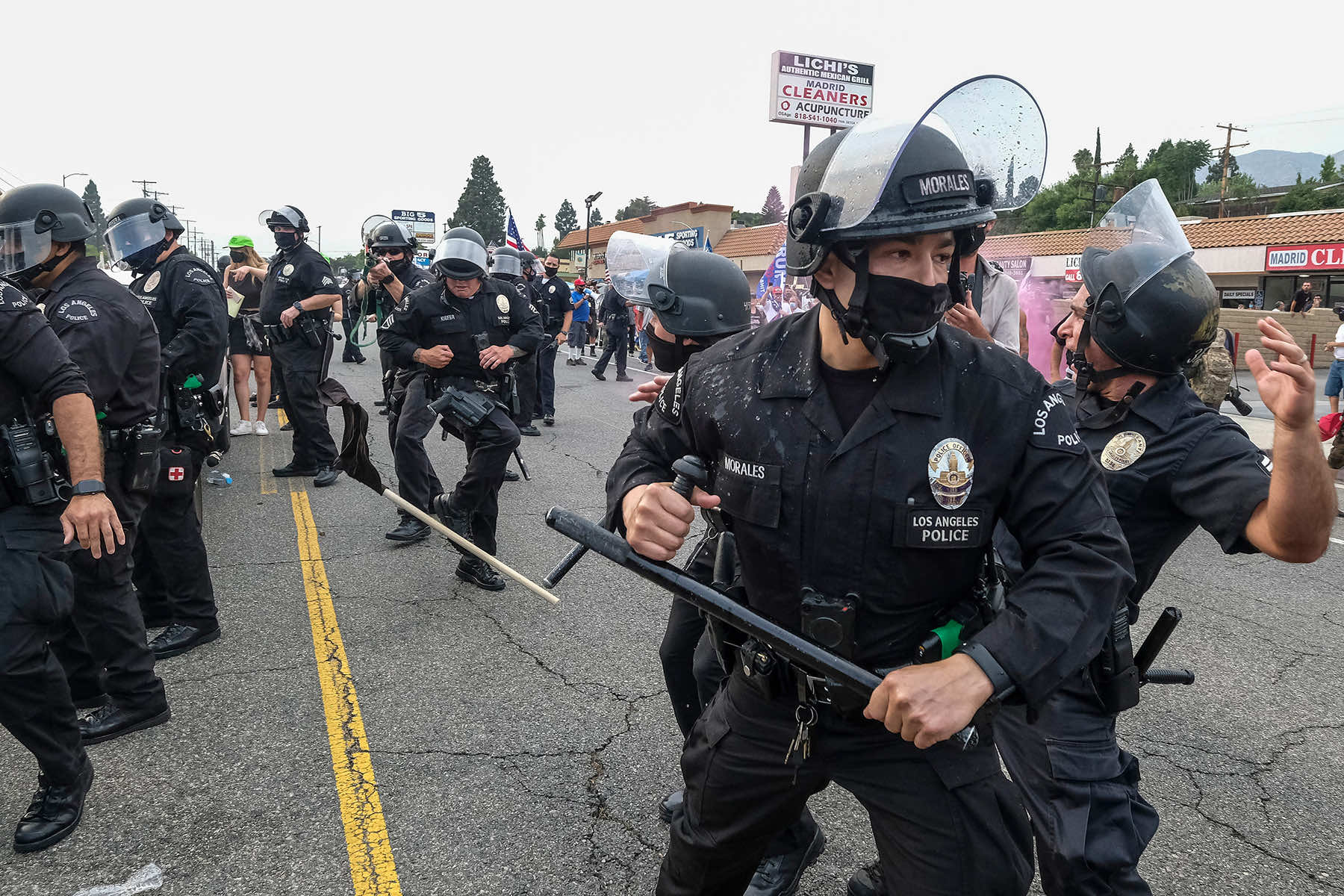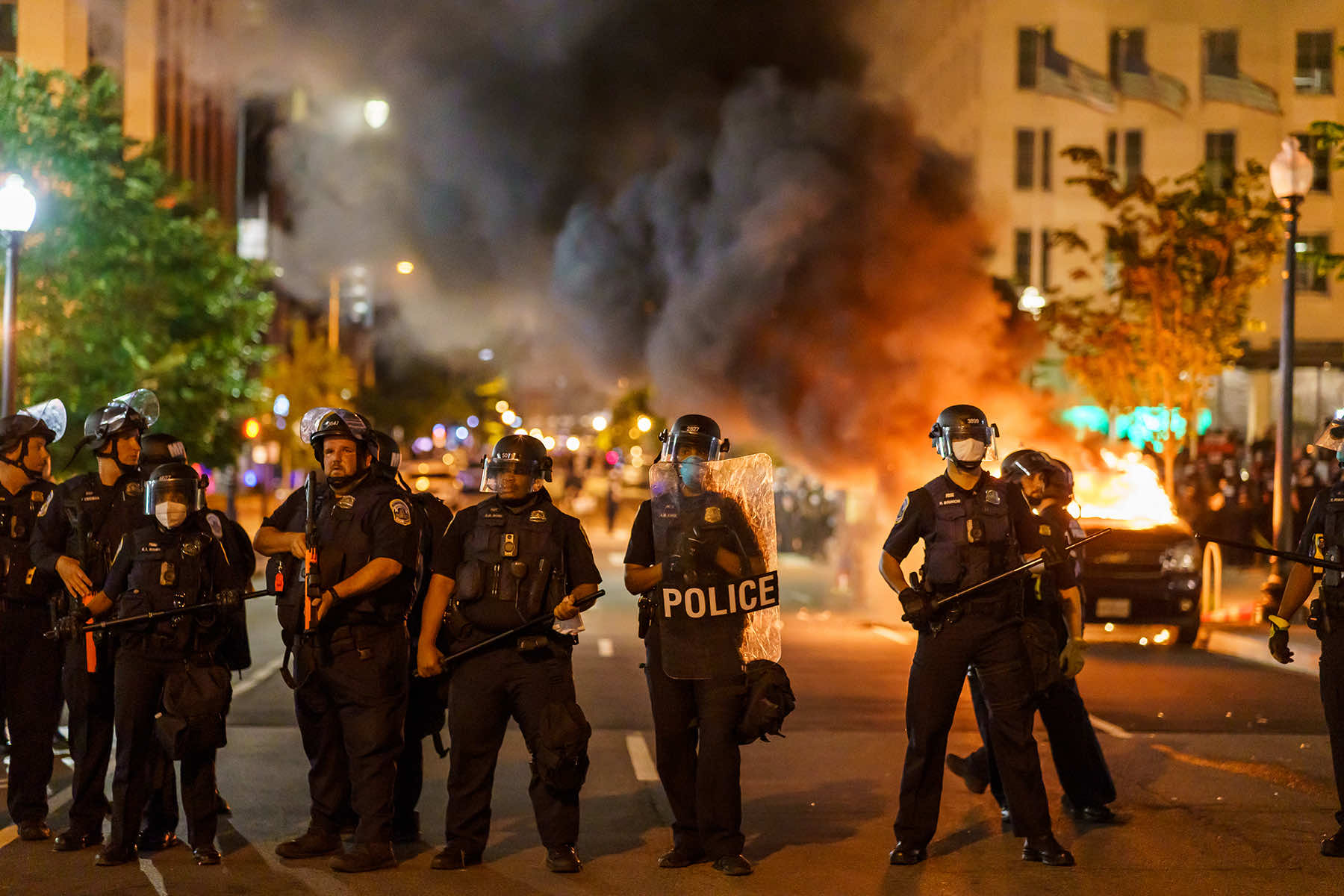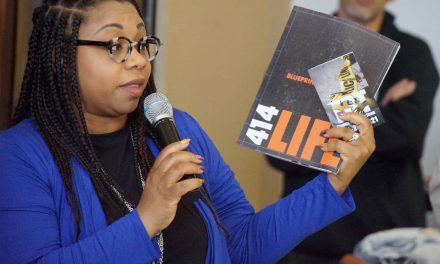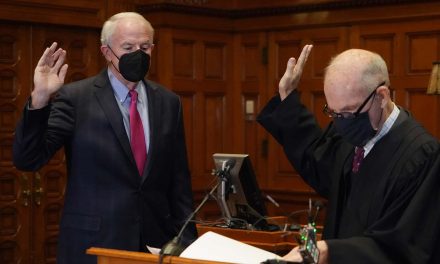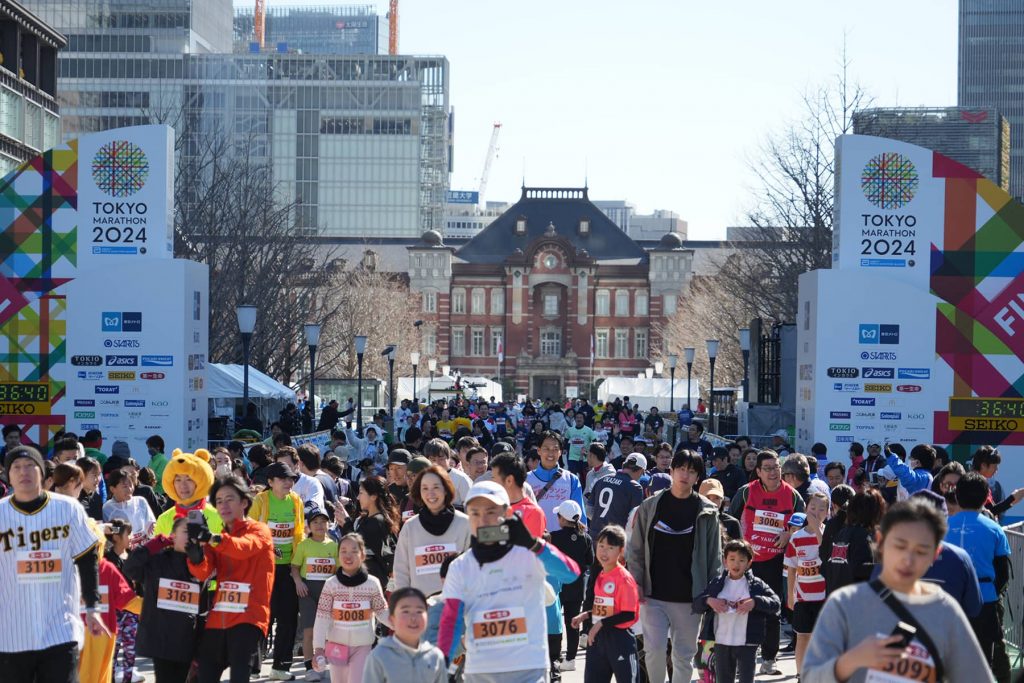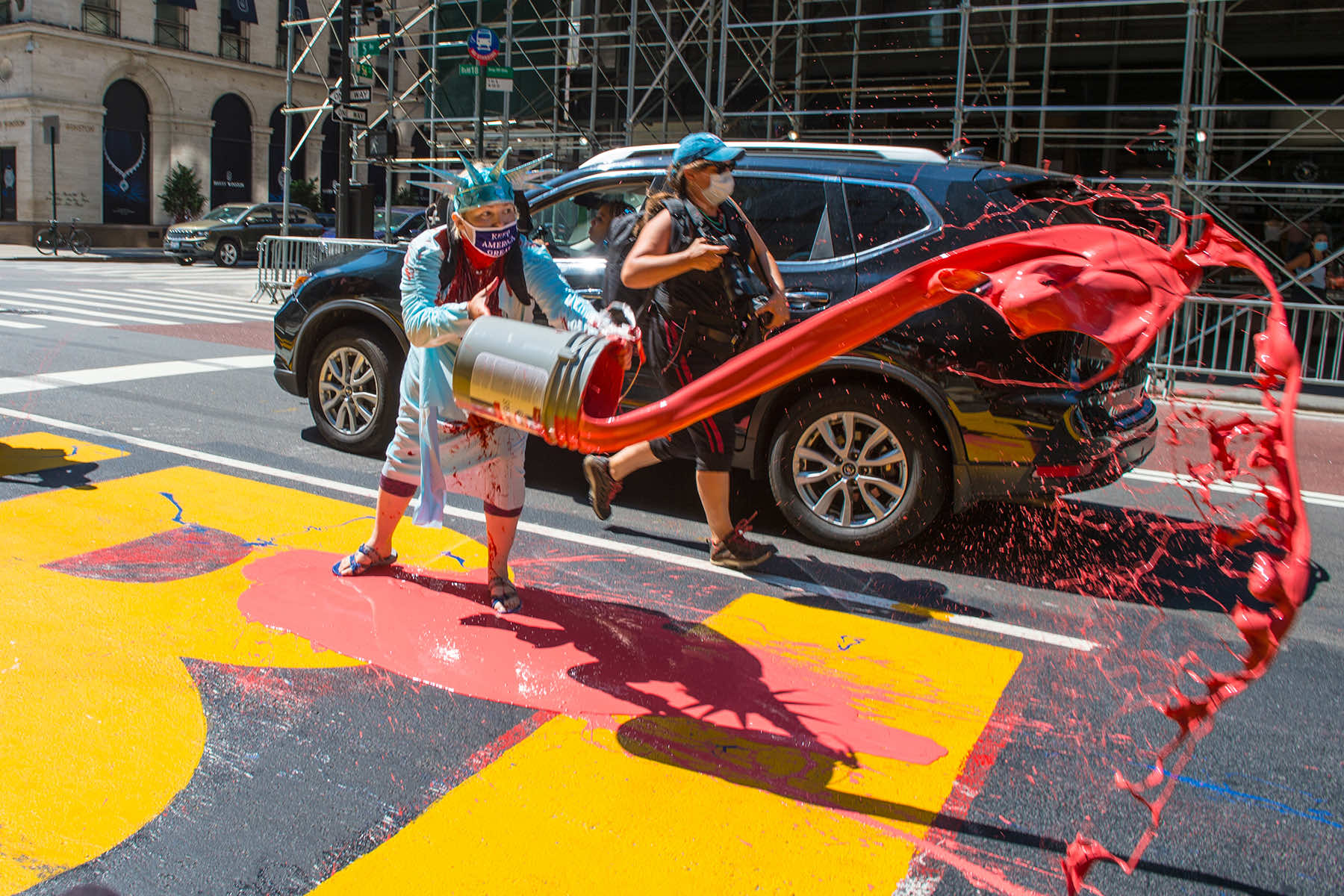
When George Floyd was murdered beneath the knee of a Minneapolis police officer on May 25, 2020, the nation erupted in a wave of protests not seen in a generation.
What could have been a reckoning, a moment for political unity and moral clarity, was instead hijacked, distorted, and vilified by then-President Donald Trump and his radical right-wing political base, known as MAGA (Make America Great Again).
Rather than address the systemic injustice that the protests sought to confront, Trump turned the nation’s pain into a political weapon, casting the demonstrators not as citizens demanding justice, but as enemies of the state.
The death of George Floyd was not only a flashpoint, it was a litmus test. And the Trump regime failed that test deliberately and spectacularly. Trump’s response was not one of empathy, leadership, or national healing. It was a strategy of escalation.
He militarized the streets, encouraged violence against protestors, and used the machinery of government to label his political opponents as threats to national security. The aim was not to solve a crisis, but to deepen one, turning social unrest into campaign fuel.
The rhetoric began immediately. Within days of Floyd’s death, Trump had abandoned any pretense of compassion. He flooded social media and press briefings with inflammatory statements designed to trigger fear and resentment. Rather than acknowledge the bipartisan horror that Floyd’s murder elicited, he smeared protestors as “thugs,” accused them of orchestrating insurrection, and signaled to his supporters that force, not reform, was the appropriate response.
The effect was predictable and intentional. Republican governors followed his lead with heavy-handed crackdowns. Conservative media platforms amplified cherry-picked footage of occasional looting to drown out the reality of overwhelmingly peaceful protests.
State legislatures, emboldened by MAGA fervor during the COVID-19 pandemic, began drafting laws to criminalize dissent under the guise of “public safety.” And through it all, Trump’s loyalists in Congress offered cover. It was not by defending his actions explicitly, but by framing protestors as the true threat to democracy.
By mid-2020, America had ceased to have a coherent national conversation about policing or accountability. Instead, it was locked in a proxy war of narratives, one side marching for justice, the other obsessively broadcasting images of burning cars and shattered glass.
The narrative war was not an accident. It was a political calculus. Equate the calls for justice with chaos, and then present Trump as the only candidate capable of restoring “order.” The fact that the unrest was inflamed by his own rhetoric was not a flaw in the strategy, it was the strategy.
The Republican Party’s complicity in this distortion cannot be overstated. While some officials expressed muted concern in the days after Floyd’s death, they quickly fell in line with the MAGA narrative once it became clear that Trump would make “law and order” the centerpiece of his re-election campaign for his second term.
Their silence, and often their explicit endorsements of Trump’s actions, helped mainstream a warped reality where protestors were cast as villains and systemic racism was declared a myth.
Meanwhile, the right-wing media ecosystem kicked into overdrive. Inflammatory coverage looped endlessly on cable news and social media platforms, stripping the protests of context and replacing them with caricature.
The same outlets that had long trafficked in racial grievance now had their perfect target: a multiracial coalition of protestors demanding structural change. They were painted not as engaged citizens but as radicals, anarchists, or even terrorists.
Every instance of property damage was elevated above the thousands of peaceful marches. Every police reform proposal was twisted into a threat against suburban safety. Facts were discarded. Fear was monetized.
But perhaps most corrosive was Trump’s decision to deploy federal forces against protestors, not just in Washington, but across several cities that became symbolic battlefields in the administration’s culture war.
He did not do it quietly. Instead, it was staged for the cameras, complete with military gear, anonymous federal agents, and performative aggression. In Portland, Chicago, and elsewhere, the goal was not to restore peace. It was to provoke confrontation.
Every flash grenade and tear gas canister was meant to create footage that could be repackaged into campaign ads, pushing the lie that America was under siege from within and only Trump could save it. Every eye that a photojournalist lost to a rubber bullet intentionally shot at their face was another example of Trump’s desire to punish the news media.
This strategy relied on a cruel inversion. The more injustice protestors exposed, the more they were accused of sowing division. The more evidence they produced of racial bias in policing, the more fervently the MAGA machine denied that racism existed. Every demand for justice was rebranded as an assault on tradition, patriotism, and the rule of law.
And in doing so, the Trump movement entrenched a worldview in which empathy is weakness, accountability is treason, and power must always be defended by force.
What began as a national reckoning became, under Trump’s direction, a partisan purge. Protestors were labeled extremists. Allies were smeared as puppets of the radical left. Journalists covering the uprisings were assaulted, maligned, and discredited. Even veterans who marched in solidarity were mocked and dismissed.
Trump’s America was not a place for dissent. It was a place for obedience, and any challenge to his authority was painted as a threat to the country itself.
This did not merely distort the conversation about George Floyd, it sabotaged it. It re-centered the focus on property, not people. On broken windows, not broken systems. On slogans, not substance. And in doing so, it preserved the very structures of impunity that protestors were fighting to dismantle.
The long-term damage of this radicalization has outlived Trump’s first term. Five years later, the aftershocks still shape American political discourse, policing policy, and cultural divides. The distorted framing of the George Floyd protests by Trump and the MAGA movement not only undermined urgent calls for justice. It also created a template for how to discredit civil rights movements in the future.
This was not just a matter of misrepresentation. It was a coordinated assault on the concept of legitimacy itself. By relentlessly casting protestors as criminals and framing police as the final line of defense against chaos, Trump advanced a worldview in which the state is never wrong and dissent is always dangerous.
In that logic, justice is not something to be pursued through reform but enforced through control. And that control, increasingly, has been outsourced to armed actors beyond just the police. That included right-wing militias, vigilantes, and paramilitary sympathizers emboldened by MAGA rhetoric.
Kenosha became the most infamous case study of this dynamic. After the police shooting of Jacob Blake in August 2020, protests surged once again. In the vacuum of responsible leadership, chaos followed. A 17-year-old armed with a rifle, who had crossed state lines to patrol the protests, fatally shot two people.
Rather than condemn the violence, Trump and many in his orbit defended it. Right-wing media cast the shooter as a hero. MAGA supporters lionized him as a symbol of “law and order.” The logic was unmistakable, when the state does not suppress protest, private actors must.
This is where Trump’s radicalization of response metastasized into a broader culture of permission. Permission to surveil, to silence, to punish. State legislatures, riding the momentum of Trump’s tactics, passed dozens of laws in the years that followed aimed at restricting protest rights.
Bills were introduced that protected drivers who hit demonstrators with cars. Others redefined public assembly as terrorism. All of it built on the foundation laid in 2020, when a protest was not met with dialogue but with force and disdain.
The legacy of that strategy is visible in every effort to erase, distort, or rewrite the meaning of Floyd’s murder. School boards have banned curriculum that discusses systemic racism. Textbooks whitewash the protests as riots. Social media algorithms continue to promote narratives that demonize racial justice movements while elevating conspiracy theories about “antifa” and left-wing plots.
The facts of Floyd’s death are now contested, not because the evidence changed, but because the MAGA movement succeeded in saturating the discourse with noise and distrust. This was the true power of Trump’s approach. Not to offer solutions, but to exhaust the public into submission.
By flooding the zone with panic, distraction, and fabricated enemies, Trump did not need to argue against reform. He only needed to make the very idea of reform sound dangerous. In that environment, the moral clarity of the protests, the global cries for Black lives to matter, were drowned beneath a torrent of manufactured crisis.
Even now, Trump and his supporters continue to reference the 2020 protests as justification for their own authoritarian impulses. The events are wielded like a club as proof, they claim, that dissent must be preemptively crushed, that political opponents are not just misguided but dangerous.
This is the legacy of Trump’s radicalization: a permanent suspicion of protest, a permanent excuse for repression.
For many Americans, especially Black Americans, this has deepened a crisis of faith in the institutions that claim to serve them. The police were never held accountable in any systemic sense. The reforms demanded in 2020, from civilian oversight to budget transparency, were either stalled or gutted.
The result is a bitter contradiction: a nation that erupted in protest over injustice now lives under a political culture that punishes those who speak out against it.
None of this happened by accident. It was the result of deliberate choices by a president who viewed division as a political asset, who treated civil unrest as a campaign strategy, and who leveraged state violence as a tool of self-preservation.
Trump did not simply mishandle the George Floyd protests. He radicalized the American response to them, transforming a nationwide demand for justice into a partisan battle over power.
This is the enduring impact of the MAGA war on justice. It was not just a denial of what happened to George Floyd. It was an attack on the very possibility of a shared reality. It was a campaign to criminalize empathy, to punish resistance, and to ensure that no future movement for justice would be allowed to rise without being smeared, surveilled, and suppressed.
And in that campaign, Trump succeeded. The conversation shifted. The momentum stalled. The backlash institutionalized. And America, once again, stepped back from the precipice of change. Not because the cause was lost, but because the culture of power, fear, and propaganda made sure it could not win.
© Photo
Kevin RC Wilson, Ringo Chiu, and B. Grocker (via Shutterstock)

